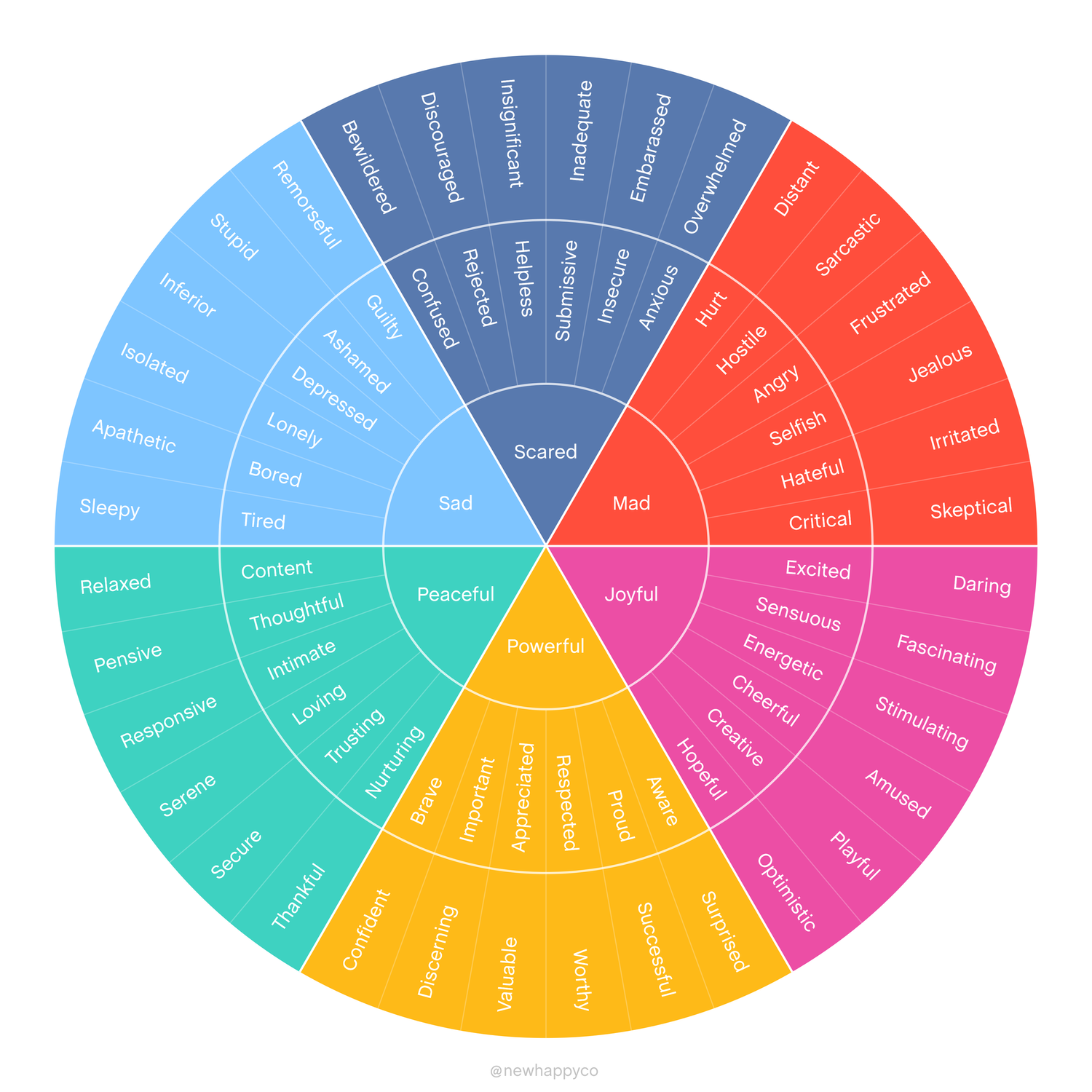Why a colorful circle might be more helpful than you think
I’m not usually one for gimmicks, visuals, or pop-psychology printables. However, they have their place.
And I’m not one to ignore what works.
Early in my career, I armed myself with every clinical tool I could find. The “right” handout? I had a filing cabinet full of them. (Yes, hard copies—this was before scanners were mainstream.) My office walls were lined with towering bookshelves—books inherited from my father’s clinical practice and my grandfather’s medical library. A physician born in 1897. Freud? Anna Freud? Jung? All there. Read most of them. Understood some. Fell asleep while reading more. Admired the rest.
I fancied myself “well-educated.” But here’s the truth: while no theorist holds the key to healing all things, the talking cure is real. The brain is an organ. Healing still happens through relationship.
So when I came across a model called The Feeling Wheel, I raised a skeptical eyebrow.
I discovered that patients could peel back layers of emotion, using the feeling wheel to name what they carried. The awe it brought them was life-changing. I witnessed countless moments where the wonder of naming something precious — a feeling — overcame my patients.
And I remembered a moment with my own daughter.
We lived in Southern Vermont, on a side street, in an old yellow farmhouse with a curved wall that felt like a hug. The house had a history steeped in healthcare and compassion; a nurse once lived there, responding to a kitchen bell summoning her to the emergency department. It was a house filled with love.
One day, my daughter—just four years old—tumbled down the staircase. Tears streamed down her face. When I asked whether it was a “body ouch” or a “feeling ouch,” she cried, “Both, Mama, both!”
We sat together.
I knelt beside her and asked her to show me her physical hurt first: a skinned knee.
“Your body is doing its job,” I said. “Pain tells your body to pay attention.”
After tending to her knee, the deeper truth emerged:
“That was scary, Mama.”
We talked.
She described the fall, the anger at the “stupid stairs,” and the hurt she couldn’t quite put into words.
And there it was: a moment of emotional literacy. A moment of naming feelings: mad, scared, disappointed, hurting—all within one small body.
In clinical work, naming emotions isn’t just a nice exercise—it’s neurologically regulating.
Research from interpersonal neurobiology (Siegel, 1999) and affective neuroscience (Panksepp, 1998) shows that putting words to feelings reduces emotional intensity by activating the prefrontal cortex. This idea is often summarized as “Name it to tame it.”
Freud’s original “talking cure” focused on turning unconscious pain into something bearable and integrated. More recent trauma-informed and somatic models (like Bessel van der Kolk’s and Pat Ogden’s work) remind us that the body holds what the mind sometimes cannot yet name.
When we use a tool like The Feeling Wheel, we’re not just playing with words—we’re building bridges:
- Between sensation and meaning
- Between memory and story
- Between pain and healing
That bridge matters.
Years later, when my daughter became a teenager, I realized I was the one struggling to name my emotions. I had charts, wheels, and libraries worth of knowledge.
But there were parts of me—deep, wordless parts—where all I felt was overwhelm.
Just pain. Just “it hurts.”
No words.
In those moments, the simple act of naming an emotion—any emotion—became an act of self-kindness.
That’s why The Feeling Wheel is more than a colorful chart.
It’s a map back to ourselves.
A quiet invitation to ask:
- What am I feeling beneath this reaction?
- This irritation?
- This fog?
If you have two minutes today, I invite you:
Look at the Feeling Wheel.
Let your eyes settle on three or four words that feel familiar.
Stay curious. No judgment.
For me, this small practice eases the grip that unrecognized feelings have over my choices, my actions, and even my general attitude for the day. It softens me toward myself.
It’s how I attend to the little version of me—the one who once skinned her knee and needed someone to sit beside her and say, “Tell me more.”
Because adulthood, in its real, hard-earned beauty, gives us this gift:
We can become that someone for ourselves.
We can offer language, presence, and care to our own pain.
And that’s not gimmicky at all.
That’s healing.

